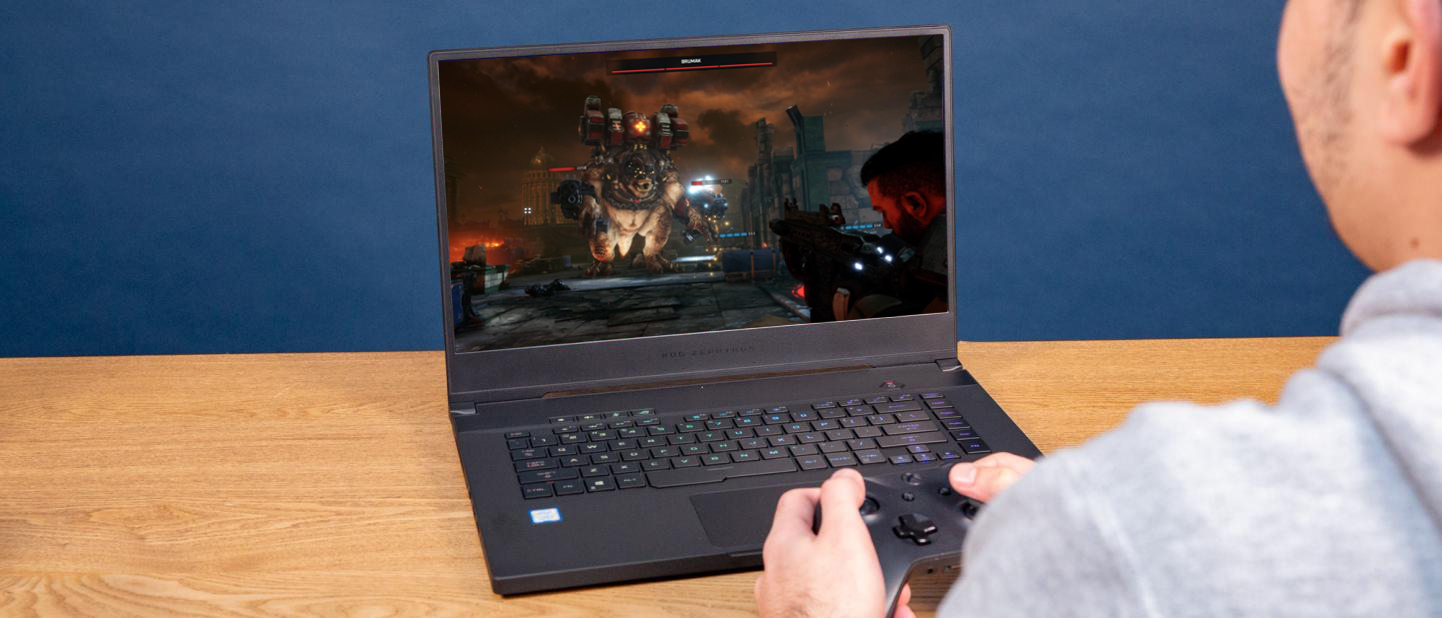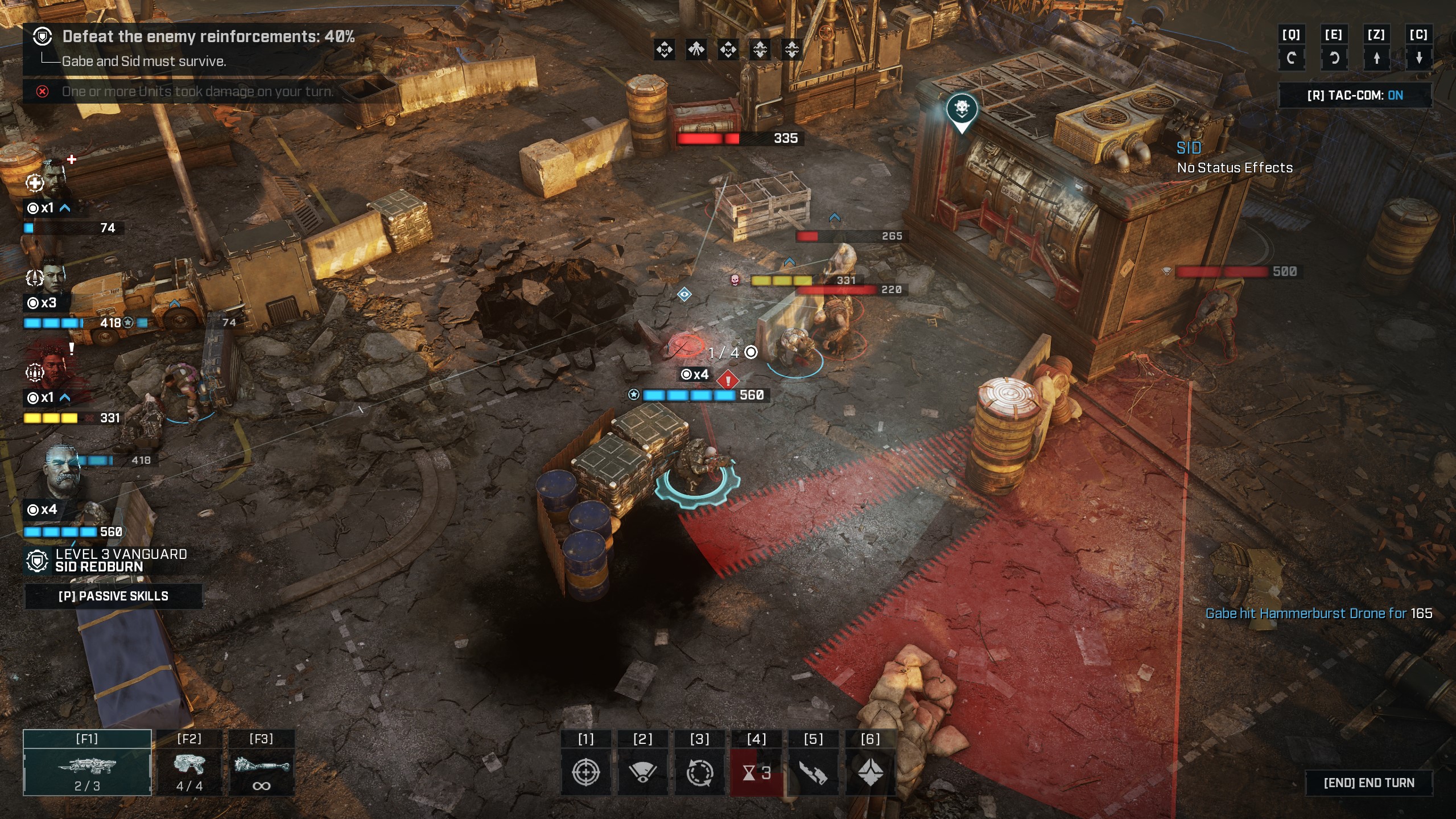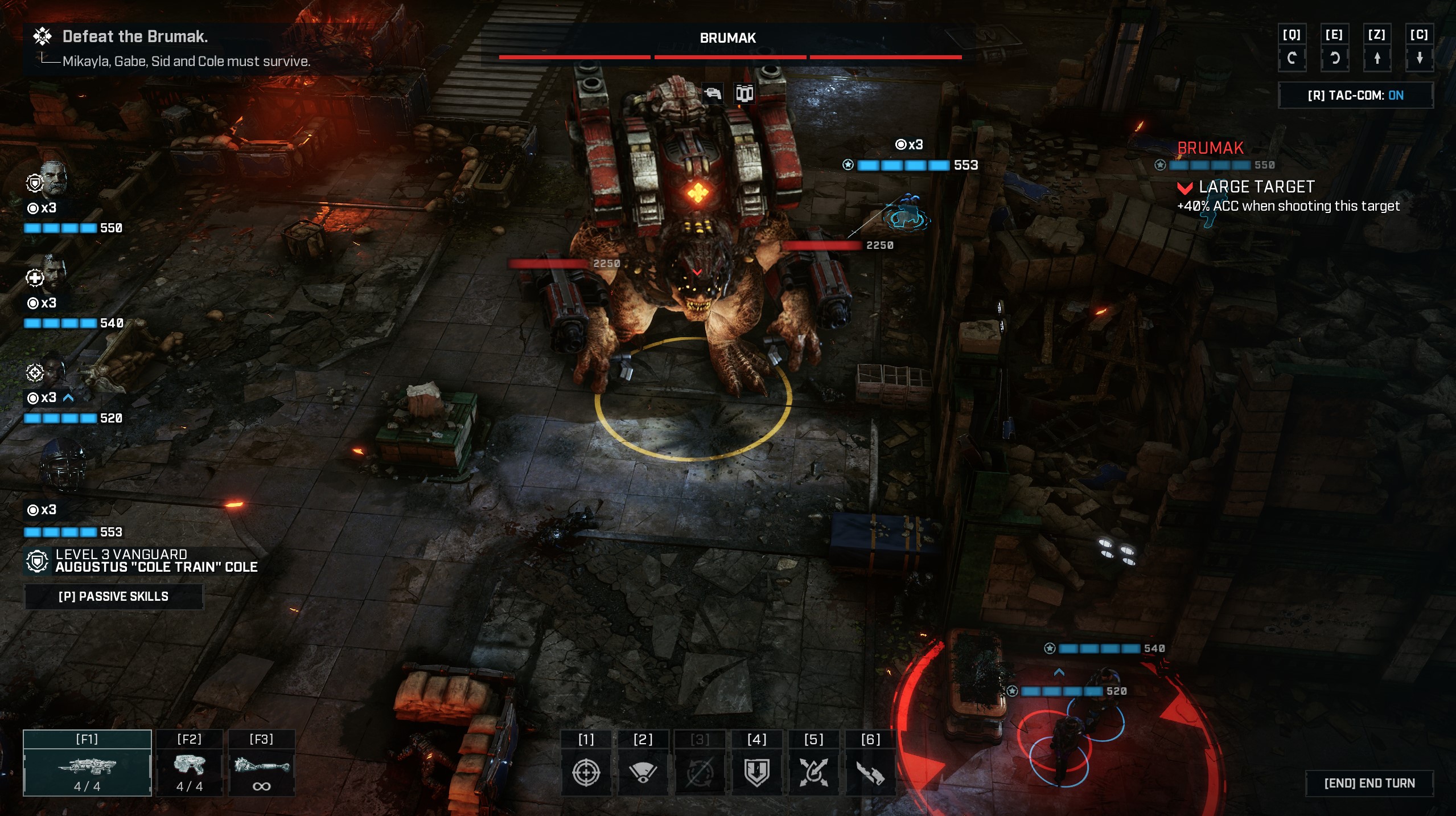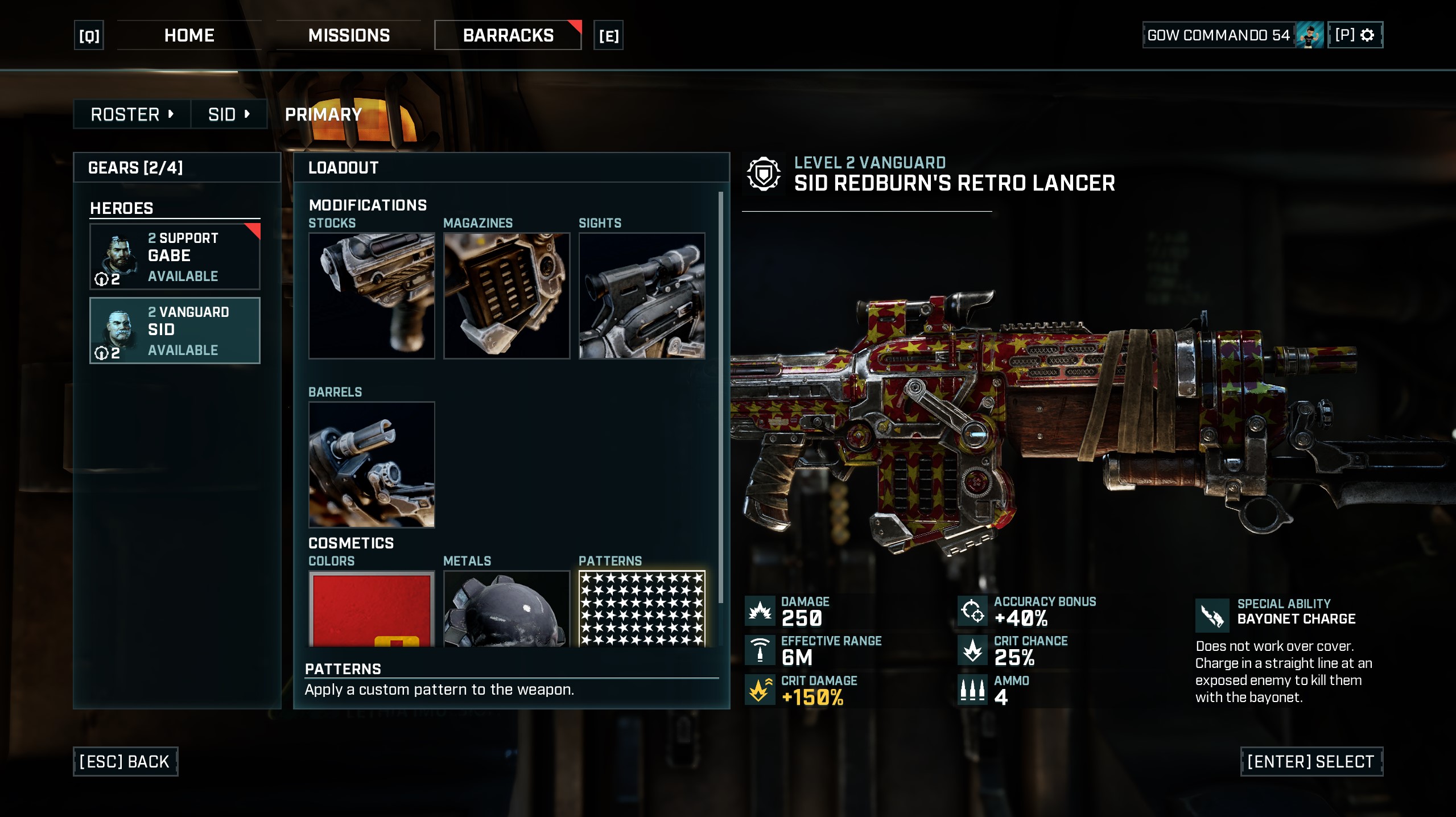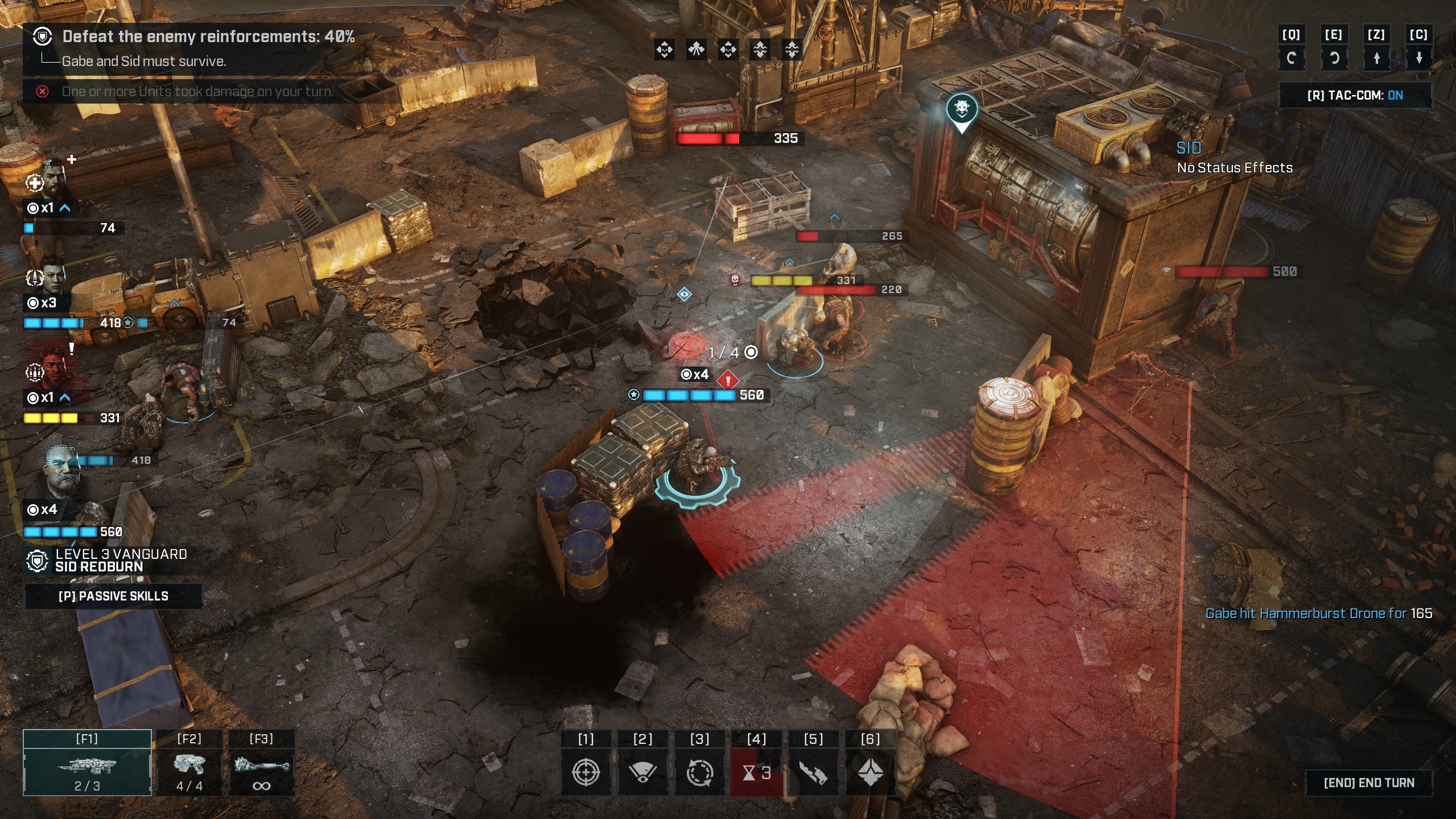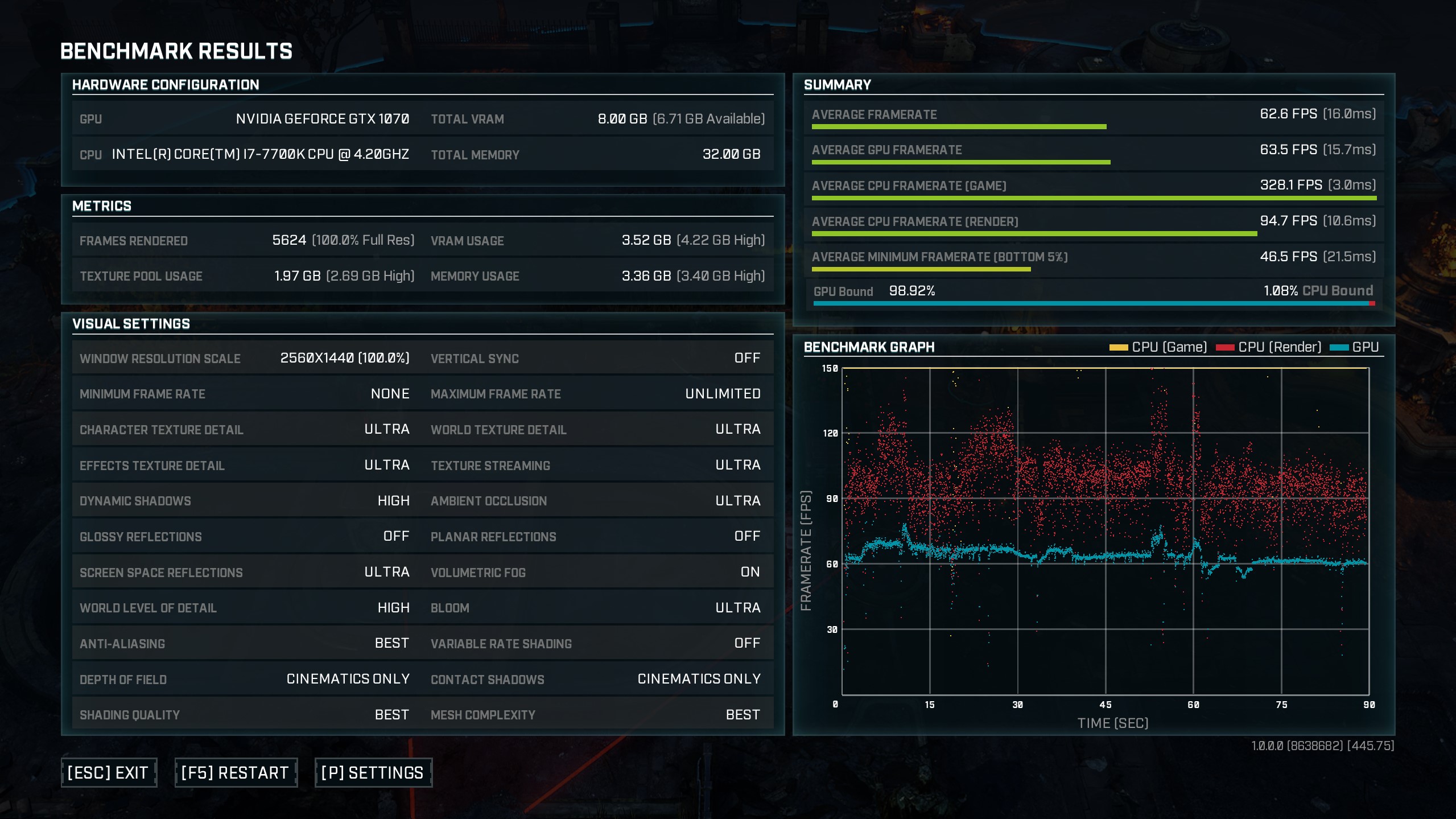Laptop Mag Verdict
Gears Tactics is an excellent strategy game for both Gears of War and XCOM fans, but the story starts off a bit stiff.
Pros
- +
Thoughtful turn-based mechanics
- +
Cosmetics are on point
- +
Loads of performance settings
- +
Accessibility settings
Cons
- -
Story starts off stiff
- -
Finicky cursor-based abilities
Why you can trust Laptop Mag
Gears Tactics looked kind of silly when the trailer first dropped at E3, but it should have been apparent then that a Gears of War-meets-XCOM game is a match made in blood, guts and glory. The turn-based strategy combat works well for Gears because it’s a cover-based shooter, so technically the format is the same, except you can plan out your moves more tactically.
What Gears Tactics brings to the table apart from thoughtful turn-based mechanics is how well the developers Splash Damage and The Coalition approached cosmetics and character creation -- everything is free from both currency and gender. Even diving into the settings proved to be fruitful, as I discovered a wealth of performance and accessibility settings.
While I enjoyed the gameplay, the story failed to immerse me into its pre-Gears universe. I played 8 hours before reaching an interesting plot point. Despite that, for the gameplay alone, Gears Tactics is one of the best PC games you can play right now.
The Gears of War prequel you didn’t ask for
Gears Tactics takes place 12 years before the original Gears of War. This Gears squad is led by Gabe Diaz -- Kate Diaz’s father. The prospect of exploring Kate Diaz’s family heritage seemed like an exciting idea.
However, Gears Tactics opened up with a similar theme to that of Gears of War. Gabe Diaz is yet another soldier who was turned off by the COG and got dragged into another big mission (remind you of someone?). Diaz’s mission is to take out Ukkon, the locust responsible for creating Corpsers and Brumaks. I haven’t beaten the game just yet, but I’m a little disappointed with the pacing of the story so far. A big bad locust doing big bad things isn’t exactly the most enticing bait, and there aren’t enough story-driven cutscenes between missions to keep my attention.
Despite that, this still is a Gears game with full-on Gears 5-quality cutscenes. Splash Damage and The Coalition spared no expense in delivering the full Gears of War experience, from the graphics to the iconic Gears sound design and soundtrack. To top that off, while you’re chainsawing some locusts, you can be serenaded by the deep and melancholic voice of Gabe Diaz, who is played by none other than the one-armed Wolf himself, Sekiro -- or Noshir Dalal in the real world.
Gears of War meets XCOM
In Gears Tactics, each character gets a certain number of action points (AP), and they can use those points to either move, attack or use a skill.
Sign up to receive The Snapshot, a free special dispatch from Laptop Mag, in your inbox.
The four guaranteed moves each character can perform, no matter what class they are, are Shoot, Overwatch, Reload and Disabling Shot. Shoot and Reload is self-explanatory. Overwatch lets you select an area (a cone) and shoot any targets that run into it with your invested AP, a tactic particularly effective against Wretches. On the opposite end of that, Disabling Shot is designed to interrupt an enemy’s Overwatch.
Overwatch is a neat system that gives you the option to plan attacks ahead of time. This is especially important when enemies are out of attack range and you want to wait for them to come to you. And having Disabling Shot to counter an enemy’s Overwatch balances the mechanic.
However, I have run into a couple issues with it. My biggest crux with Overwatch is that if two units have an overlapping area of effect, the units will shoot at the same time at the first target, thus wasting the opportunity to hit a second or third enemy possibly caught in Overwatch. Meanwhile, on the receiving end, I’ve been caught in Overwatch range despite being just outside of the displayed area of effect, which is incredibly frustrating.
A couple of great skills that highlight the franchise’s bloodlust for gore are the Chainsaw and Bayonet Charge. They happen to be more than visually pleasing, as the Chainsaw and Bayonet Charge skills provide a surefire way to kill an enemy without taking a chance with your sketchy accuracy. While you’re selecting the enemy you want to mince, you can also select which cover or open space your character lands on.
However, this is a bit finicky, as I had to place my cursor in just the right position to get it to work properly. I ran into a similar issue when deciding where to throw a grenade to deliver maximum damage. Due to how jittery the cursor is, skills like these turn out to be tedious, which takes away from the gameplay.
Some of my favorite moments include fighting the first boss of the game, a Brumak. It’s the most hectic battle in Act I because you not only have to worry about dodging the Brumak’s machine guns, stomp attacks and missiles, but there are also Wretches that pop out of the ground through Emergence holes. Tackling the Wretches can waste a unit’s entire turn, because you have to kill all the Wretches and then toss a grenade in the Emergence hole. And if they have to reload? Ugh. The goal is to shoot the Brumak’s back. Figuring out how to juggle him without getting wiped was incredibly stressful and fun.
Choosing your playstyle
Each character in Gears Tactics is assigned a class. Unfortunately, you don’t get to choose your class, instead, you have a skill tree spread out into four different directions that’ll radically change the way each class functions.
The classes I currently have access to are: Support (healer), Vanguard (tank), Sniper (DPS, long-range), Scout (DPS, short-range) and Heavy (DPS, medium-range). As a Support class, you can prioritize being a Surgeon (single-unit healer), a Combat Medic (group healer), a Strategist (damage dealer) or a Paragon (a support focusing on giving teammates additional actions).
Like the Support class, all of the other classes require you to make a choice of which direction you want to go. You can’t fill all of the skill points, unfortunately, as you can only unlock 18 out of 34. However, there are 17 skills on each side, so you can still technically fill two sub-classes.
If you’re like me, you’re probably going to spend 30 minutes assigning skill points to each character every time you level up so you don’t mess something up. You shouldn’t worry though, because Gears Tactics will reward you reset tokens after completing certain missions.
I love the idea of subclasses because it allowed me to ultimately choose the way I wanted to play. As a paranoid gamer who is used to dealing with hardcore difficulty, I poured all of Gabe Diaz’s skill points into his healing.
What adds to the uniqueness of everyone’s playstyle are their weapons and armor. You can’t choose a character’s primary weapon, but you can configure the stocks, magazines, sights and barrels with equipment you find in-game or earn by completing missions. These modifications can net additional ammo, accuracy, damage, critical chance, critical damage or effective range. When it comes to pistols and grenades, however, you can swap out the equipment entirely.
For armor, you have to outfit your helmet as well as your upper and lower body. Armor determines how much additional health, evasion, movement range and critical hit resistance your characters get.
To top that off, some weapons and armor have skills on them. For example, my chest piece has a passive skill called Untraceable, which gives my unit the ability to take a 40% damage reduction against enemy Overwatch shots. For my weapon, I have a sight that has the passive skill Diagnosis, which increases my unit’s healing skills by 10%.
Forward-thinking customization
One of my favorite features about Gears Tactics is its customization. It does two things that I think every game should do: It frees characters from gender labels and unlocks all of the cosmetic options for free from the start.
You can customize clothing as well as weapons and armor by choosing different metals, colors and patterns for everything. For the non-hero characters, you can change their hair, hair color, facial hair, facial hair color, facial scars, body scars, headgear (items for head, upper face and lower face), tattoos and finally, their name.
Whether a new recruit looks more feminine or masculine doesn’t determine their gender or how you can design them. Gears Tactics lets you do whatever you want, and I’m all for it. I turned Gabe Diaz into a walking Transgender flag. For reference, I used Teal as my main color and White as the accent color over the Default Metal with the Stitched pattern for some flair.
It’s surprising to see all of the cosmetic options available in Gears Tactics that aren't sequestered behind a paywall. There are 31 patterns, 29 colors (including 29 different accent colors attached to them) and 16 types of metals to choose from when customizing armor and weapons.
Gears Tactics PC performance
Overall, Gears Tactics performed incredibly well -- it was difficult to suss out any bugs or glitches while playing through the game’s story.
When I dove into the graphics settings, I found a healthy amount of options to optimize Gears Tactics. There’s resolution scaling, vertical sync, minimum and maximum frame rate for gameplay and cinematics, cinematic scaling mode and a performance tracker.
The more advanced stuff included: texture details for the characters, world and effects as well as shading quality, cone step mapping, sharpening and volumetric fog. There are options for multiple types of reflections, such as planar, glossy and screen space. Top that off with world detail, contact shadows, shadow resolution, dynamic shadows, particle spawn rate, dynamic object lifetime, sub surface scattering, depth of field, motion blur, anti-aliasing, bloom style, bloom, lens flare intensity, ambient occlusion, mesh complexity, variable rate shading, tiled resources and async compute.
There’s a lot.
What impressed me the most was opening the game and immediately getting dropped into the Accessibility settings menu, which is badass and the kind of forward-thinking stuff I’d like to see more often. The Accessibility settings include: color blind mode, captioning, captioning size, gore, mature content and “let the game read to me.” In the very first menu, Gears Tactics also offered options for the gamepad and keyboard bindings, which is also super helpful.
While you can play this game on Xbox without an issue, you won’t get the wealth of performance settings that you’d get on PC, so we recommend playing it on a good gaming rig if you have one.
Gears Tactics PC requirements
I ran my desktop-level Nvidia GeForce GTX 1070 GPU with 8GB of VRAM through Gears Tactics’ very convenient benchmark on standard Ultra settings at 1440p and scored 63 frames per second. On Custom, at maxed-out settings, I hit a respectable 38 fps. The frame rate drop is worth the extra detail that gets added to the game.
With the Aorus 15G’s laptop-level Nvidia GeForce RTX 2070 Super with 8GB of VRAM, the machine nailed 69 fps on Ultra settings at 1080p and 65 fps on Custom maxed out settings at the same resolution.
You can either buy Gears Tactics on Steam or Xbox (PC or Console) for $59.99, or you can play it for free with Xbox Game Pass.
The minimum requirements for a system to run Gears Tactics include Windows 10, an Intel Core i3 Skylake or AMD FX-6000 CPU, 8GB of RAM, an Nvidia GeForce GTX 750 Ti or AMD Radeon R7 260X GPU and 45GB of available space.
Meanwhile, the recommended requirements are Windows 10, an Intel Core i5 Coffee Lake or AMD Ryzen 3 CPU, 8GB of RAM, an Nvidia GeForce GTX 970 or AMD Radeon RX 570 GPU and 45GB of available space.
Bottom line
Do you like Gears of War and XCOM? You’ll fall in love with Gears Tactics. Do you like only one of those games? You’ll probably still enjoy Gears Tactics. As long as you’re okay with the story taking a bit of a backseat in the beginning, you can embrace the full-on tactician inside you and come up with clever ways to take out the grubs.
Gears Tactics is one of the coolest ideas for a tie-in into a major IP to come around in a while, and it’s very reminiscent of games like Halo Wars. I’m down to see more of Xbox’s games get adapted into different genres.

Rami Tabari is the Reviews Editor for Laptop Mag. He reviews every shape and form of a laptop as well as all sorts of cool tech. You can find him sitting at his desk surrounded by a hoarder's dream of laptops, and when he navigates his way out to civilization, you can catch him watching really bad anime or playing some kind of painfully difficult game. He’s the best at every game and he just doesn’t lose. That’s why you’ll occasionally catch his byline attached to the latest Souls-like challenge.
